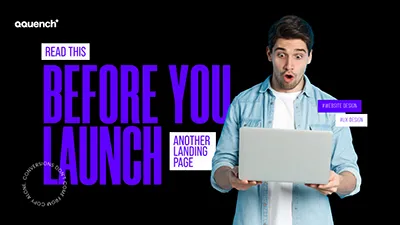
Let’s kill a myth today:
UX is not about pretty screens.
It’s not about pixel-perfect alignments, stunning dribbble shots, or animations that make designers swoon.
UX is a story.
And at Qquench, we don’t just design it.
We script it — like playwrights scripting acts, emotions, conflict, and resolution.
Because if you don’t move your user emotionally, you haven’t moved them at all.
Good UX Is Built Like a Story, Not a Style Guide
Think about your favorite movies.
They don’t just look good — they make you feel something.
That’s what UX should do too.
We build:
- Setups (orientations, onboarding moments)
- Conflicts (small friction that fuels engagement)
- Payoffs (emotional satisfaction after a journey)
Just like Robert McKee’s Story structure — great narratives are engineered, not improvised. So is great UX.
Designing for Tension, Not Just Flow
Flowcharts are useful.
But if your UX has no tension points, it risks becoming invisible.
We deliberately insert moments of:
- Uncertainty
- Curiosity
- Anticipation
Why? Because emotions anchor memories.
A tiny moment of “What’s next?” can glue a user’s experience far stronger than any tutorial.
Shoutout to Nancy Duarte’s work on how tension makes communications memorable — and the same applies in UX.
Characters Matter: Designing with Archetypes
In every project, we think:
- Who’s the Hero (the user)?
- Who’s the Mentor (the guide, the system itself)?
- What’s the Quest (goal)?
- What are the Obstacles (challenges)?
When UX frames the user as the protagonist — not a passive clicker — everything changes.
That’s how you go from “user journey” to emotional journey.
Inspired by Christopher Vogler’s adaptation of the Hero’s Journey for storytelling and screenwriting — we map learning and usage paths the same way.
Micro-Moments: The Secret Weapon
It’s not the main screen that people remember.
It’s the tiny micro-moments:
- A witty empty state.
- A gentle nudge after a wrong input.
- A delightfully human 404 page.
These micro-interactions create cumulative emotional trust — and that’s what builds brand loyalty.
Take inspiration from Airbnb’s UX micro-moments — proof that small beats create big feelings.
The Qquench Method: Writing UX, Not Just Designing It
Every wireframe, prototype, and live screen we design answers these questions:
- What does the user feel here?
- What are they wondering?
- How do we guide — not command — them next?
We aren’t just arranging buttons.
We’re crafting scripts.
Every click is a line of dialogue.
Every navigation choice is a scene change.
At Qquench, UX is theater.
And the user is always the star.
Your UX Needs a Story, Not Just Screens
You can’t “design” great UX without thinking like a playwright.
Because humans aren’t computers.
They’re emotional, messy, storytelling creatures.
At Qquench, we don’t just design for functionality.
We design for feels, friction, and flow.
Because if your UX doesn’t tell a story, it’s just wallpaper.
Ready to make your UX unforgettable?







